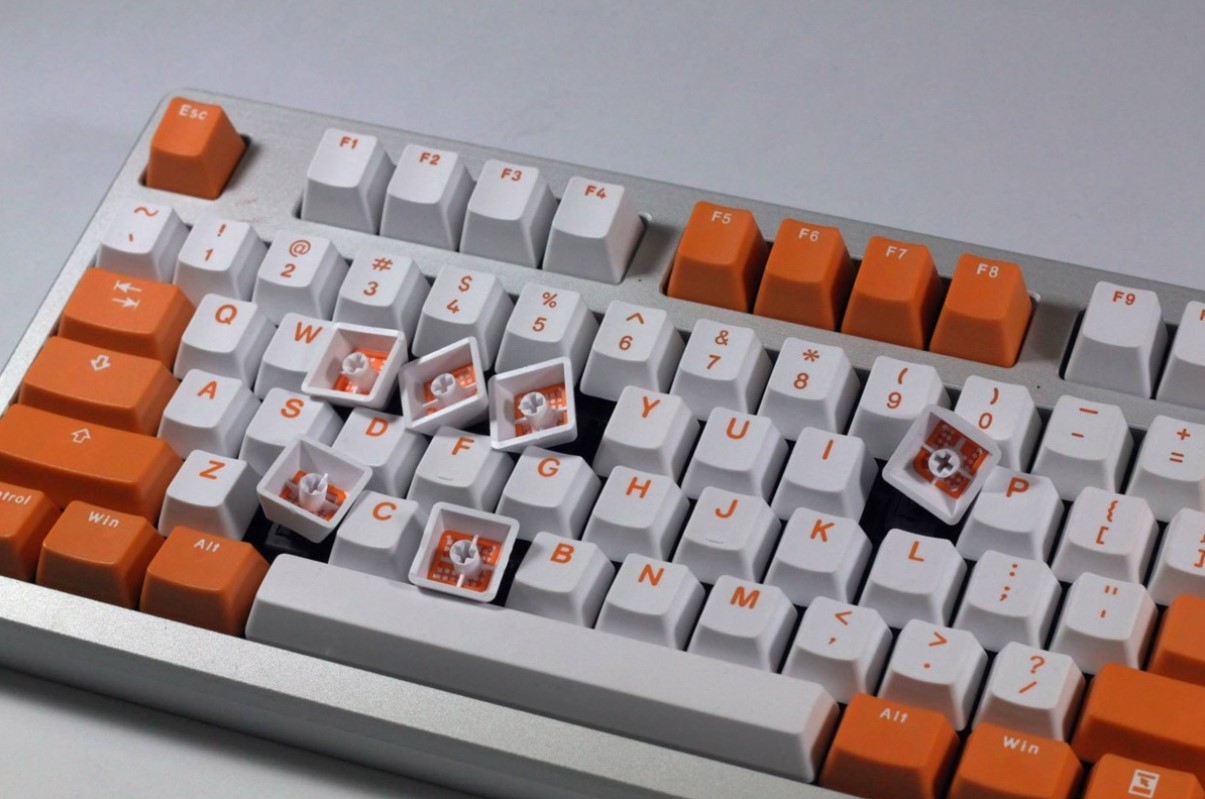Cherry Keycaps: History And Evolution
Although Cherry keyboards are renowned for their precise switches, their origins were humble. Starting in a restaurant basement, Cherry keyboards rose to prominence as a worldwide leader in mechanical keyboards and switches. Read on to learn about the history of Cherry keyboards.

1950s: Before Cherry Keyboards
In 1953, Walter Lorain Cherry started making microswitches in the basement of a restaurant in Highland Park, Illinois. His company, Cherry Electrical Products, supplied the automotive industry and experienced rapid growth, partnering with leading automobile manufacturers like Ford. However, despite their success, it would still be two decades before Cherry keyboards became a reality.
1960s: European Expansion
In the 1960s, Cherry expanded its operations to Europe by setting up a branch in West Germany. This move helped to shape the company’s brand image as a combination of German engineering and American entrepreneurship. While it would take another decade before the company released its first keyboard, Cherry’s focus on switch technology during this period laid the groundwork for the groundbreaking technologies that followed in the coming decades.
1970s: The First Cherry Keyboard Switch
During the 1970s, Cherry introduced its first keyboards in 1973, featuring switches that the company had patented the same year. These keyboards were mainly produced for other companies rather than being sold directly to consumers. Cherry continued to invest in keyboard switch technology throughout the decade and engineered the M6, which was the precursor to the popular Cherry MX line of switches.
1980s: Revolutionary Cherry MX Switches
Cherry’s introduction of the Cherry MX switch in 1983 revolutionized the keyboard industry. These switches, engineered to last 20 million keystrokes, were a game-changer. The Cherry MX line of switches is now favored by modern gamers and productivity professionals alike for their unique combinations of resistance and tactile and auditory feedback. The Cherry MX switches come in various colors, including Red, Black, Blue, Brown, and Green, with some rated to last over 100 million keystrokes.
In 1984, Cherry released the Cherry G80-0427 keyboard, one of the first keyboards to feature Cherry MX Black switches. The company also released the Cherry G80-0418, which was compatible with Apple IIe, and the G80-0413, which was IBM-compatible, the same year. These keyboards featured double-shot ABS keycaps, with some keycaps being thick and others thin. Cherry likely finished the boards before they received all the keycap molds, which caused a discrepancy in quality.
Cherry began to sell some of its keyboards directly to consumers during this time. In 1987, they introduced the G80-1000, designed for the emerging desktop market. This keyboard featured a Model M-style layout, n-key rollover, and a premium case, making it a staple in the computer market throughout the ’90s and 2000s.
In 1988, Cherry introduced the G80-3000, an iconic full-size keyboard design that is still in production today. The G80-3000 series has endured due to its intuitive, IBM Enhanced-inspired layout, double-shot ABS keycaps, and Cherry MX switches. Early models even featured n-key rollover. The keyboard has undergone many iterations throughout the years, including the addition of Windows keys in the mid-’90s and a 2017 variation called the MX Board Silent, which used MX Red Silent and MX Black Silent switches to reduce noise.
1990s: Growth for Cherry Keyboards
During the 1990s, Cherry keyboards experienced significant growth and diversification. In 1992, the company introduced the G81-3000 keyboard, which was one of the first to feature Cherry ML switches. These switches were much smaller and lighter than the MX switches, making them ideal for compact and portable keyboards. The G81-3000 was also one of the first keyboards to feature an integrated touchpad, which was a significant innovation at the time.
Cherry continued to produce variations of the G80-3000, including the G80-3011 and G80-3012, which were designed for point-of-sale applications. These keyboards featured magnetic stripe readers and smart card readers, which allowed for secure data entry and financial transactions. Cherry also released the G80-8113, which was a space-saving keyboard with a built-in trackball.
In addition to these innovative keyboards, Cherry also introduced the G83-6105, a rubber dome keyboard that was designed for the emerging market of home computer users. This keyboard was one of the first to feature a multimedia key, which allowed users to control audio and video playback with a single button press. The G83-6105 was also notable for its low price point, making it an attractive option for budget-conscious consumers.
Overall, the 1990s were a period of growth and diversification for Cherry keyboards, with the company expanding its product line to meet the needs of a rapidly changing market.
2000s and Beyond: Cherry Moves More Heavily into Mechanical Switches
As the 2000s began, Cherry increasingly focused on mechanical switches, catering to the growing demand from gamers and enthusiasts for tactile and responsive typing experiences. The company continued to refine its Cherry MX line and introduced new switches such as the Cherry MX Clear and Cherry MX Speed.
Cherry also expanded its keyboard offerings, releasing the G80-8200 with its own proprietary ML switches in 2001 and the G80-3000 MX Board in 2007. The MX Board featured a more modern design with an aluminum top plate and multimedia keys, while retaining the classic Cherry MX switches.
In 2010, Cherry introduced the MX Brown RGB switch, marking the first time that Cherry MX switches were available with per-key RGB lighting. The company also released the G80-5000 and G80-5000 RGB keyboards, which featured fully programmable layouts and customizable RGB lighting.
Cherry has continued to innovate in the mechanical keyboard space, releasing new switch types and collaborating with keyboard manufacturers to create high-end gaming and productivity keyboards.
Visit our website https://keycapscustom.com/ to looking for the type of keycaps that fits your keyboard. Here you can also find out our newest collection of keycaps such as Artisan keycaps, Anime keycaps, Pokemon keycaps, Backlit keycaps, etc.

